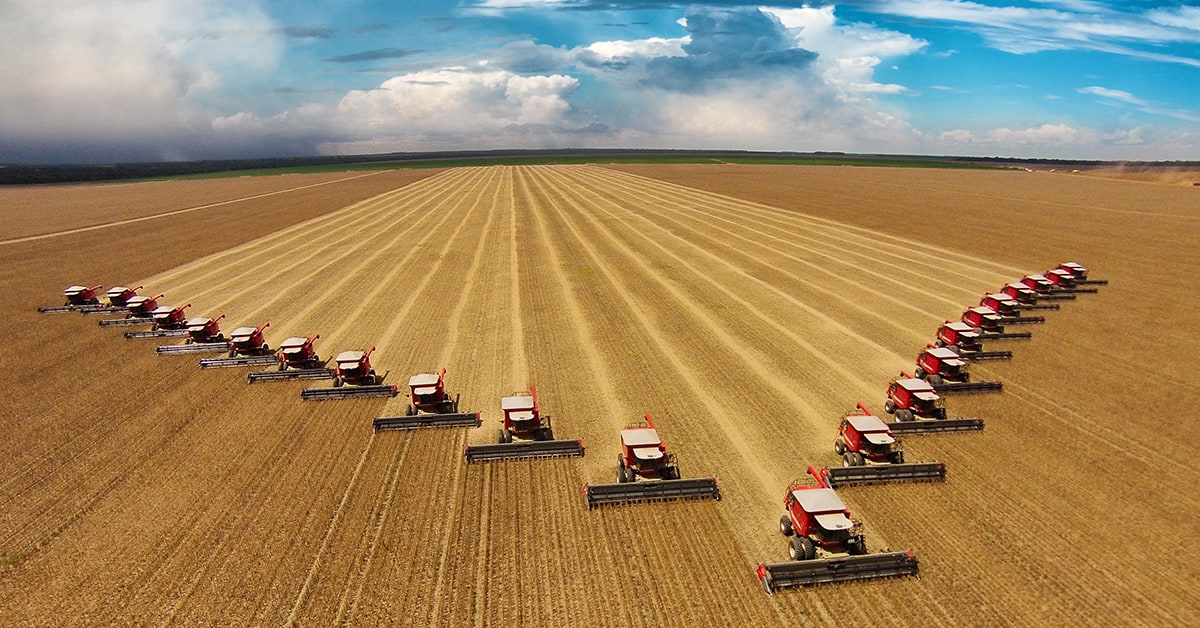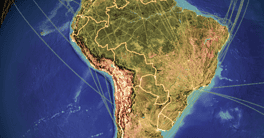How far can the new commodity cycle take Brazil?

On September 7, Brazil marked its 199th Independence Day, but Brazilians, who did not fight for independence from Portuguese colonizers, seldom celebrate it.
Yet this year, nonchalance became muted anxiety: A planned countrywide strike by truck drivers supporting President Jair Bolsonaro loomed large, with the potential to cause disruptions to food and fuel supplies at a time when the country is seeing skyrocketing price increases in both. The strike had one loud and clear demand: Fuel prices need to go down. Just days earlier, Petrobras, the country’s state-owned mega oil producer and international player, announced its fifth price hike for fuels this year.
Even though Petrobras is controlled by the federal government and produces enough oil to supply all of Brazil’s demand and still export a surplus, it follows a dollarized price scheme for the domestic market, making oil produced and sold within Brazil extremely vulnerable to currency shocks. According to the Extended National Consumer Price Index (IPCA), an inflation-measuring index of consumer prices compiled by national statistics institute IBGE, gasoline prices have increased by 31.09% from January to August alone.
According to the government, inflation in 2021 stood at 5.7% at the end of August, but for ordinary Brazilians the actual situation feels harsher. Over the past 12 months, most food items became much more expensive. The price comparison between the first half of 2021 and that of 2020 saw the big price hikes for consumer staples such as rice (46.21%), beans (48%), corn (77%) and soybeans (79%). Despite record agricultural production, the items that saw sharpest domestic price increases are, for the most part, also those for which Brazil is a top producer: With the currency at a historic low, and an international market avid to buy Brazil’s produce in hard currency, domestic supplies have gotten short shrift.
Inflationary pressures are rising around the world. However, the situation in Brazil seems to be especially intense due to a confluence of events, including a brisk, market-led devaluation of over 24% of the national currency, the Brazilian real (BRL). Further more, Brazil entered the early days of the pandemic with historically low interest rates and then lowered them to 2% per annum to counter deflationary trends early in the pandemic. When the currency devalued, the low interest rates helped fuel inflation.
However, even amid this chaos, Brazil’s economic woes have been softened by their enormous commodity output. Brazil is the world’s fourth-largest producer of crops and is expected to reach the top position within the next decade. It is the number one producer and exporter of soybeans. The nation’s stellar agricultural and mineral commodity portfolio makes it the world’s largest exporter of beef, chicken, coffee, sugar and corn.
“The sector was responsible for BRL380 billion ($73.8 billion) in 2019 and for BRL516 billion in 2020. That’s an increase of almost 36% year on year in local currency,” says Eduardo Daher, executive director of ABAG, the Brazilian Association of Agribusiness. “The forecast for 2021 is a total of BRL750 billion. That’ll correspond to 26.6% of the national GDP in 2021.”
José Ronaldo Souza Jr., director of macroeconomic studies and policies at the Institute for Applied Economic Research (IPEA), a government think tank, explains that commodity prices are intrinsically connected with Brazilian economic cycles. “Unlike in the past, where Brazil’s growth was capped by foreign debt, that variable no longer exists. Previously, you used commodity exports to alleviate the country’s foreign account deficits. This allowed Brazil to grow,” he says. “The fact that such caps no longer exist means growth comes from the cycles within the commodities sector itself. For now, the cycle seems to be favorable and to be stimulating the economy.”
The last long commodity cycle—in the early 2000s, just as former president Lula da Silva came into power—propelled Brazil to the position of sixth-largest world economy, ahead of the UK. The current cycle may not be as long or as strong. “So far, we don’t have the elements to forecast an extremely long commodity cycle such as we had in the early 2000s, but this is difficult to predict,” explains Souza. But it might suffice to jump-start and sustain an economic recovery through the turbulence of the 2022 presidential elections.
“The economy will have to find its growth trajectory and the agribusiness sector will continue to be strategic [for Brazil],” says Kátia Abreu, senator for the northern Brazilian state of Tocantins and a former minister of agriculture during President Dilma Rousseff’s term. She adds that agribusiness “will supply 100% of domestic demand while still being a relevant food supplier to various countries post Covid-19, making Brazil a contributing force in guaranteeing global food security.”
Another effect of the growing importance of agricultural commodities in the Brazilian economy is the creation of high-quality jobs in operating complex machines used both in planning and in the fields. The country has seen technopoles—high-tech manufacturing clusters—spring up around its green belt, with innovative ag-tech startups making Brazil an international leader in the field.
Patricia Bueno, CEO of innovation governance consultancy EasyHub, agribusiness innovation counselor for the Commercial Association of the state of São Paulo and a former specialist in innovation and R&D in various multinational agribusiness companies, explains the trend: “Twenty percent of permanent jobs in Brazil are in the agribusiness sector. In 2020, it was the leading sector creating new jobs. The new technologies mean rural workers are increasingly being trained for more complex functions.”
The heated commodity demand also extends to mining commodities, such as iron ore, where Brazil is an export leader. Despite tumbling prices for the ore in recent weeks, the sector is expected to be a positive component in the country’s recovery path.
“Mineral commodities should play a decisive role in the recovery of the Brazilian economy. We increased our export value by 91% in the first half of 2021 when compared to the first semester of 2020: $27.6 billion against $14.4 billion,” says Flávio Penido, the presiding director at the Brazilian Institute for Mining (Ibram), a private commercial association of 120 businesses responsible for 85% of Brazil’s mining output.
It’s undeniable that the new international commodity cycle is a boon for Brazil. However, the country has many structural and political problems to solve. Brazil has one of the world’s highest income inequality distributions on the planet, capping its internal market. It also needs to better diversify its economy, to be less exposed to external cycles it cannot control and less dependent on its exports to China. Finally, environmental sustainability issues need to be tackled seriously, along with an urgent infrastructure revamping and taxation, political and fiscal reforms. Only then will the country be able to attract more international direct investment, clean up its international image and reduce economic bottlenecks.
Brazil has very recently seen the advantages that having such vast agricultural lands and mineral riches can bring, and the country can improve productivity by investing in tech without destroying its precious biomes. It has also seen that even if commodities can propel the country into the top economies of the world, it can only sustain continued economic growth in the long term with reforms.
This cautionary tale has been told as recently as 2015, when the fiscal situation in Brazil generated the worst economic crisis in the country’s history.
Commodities can keep Brazil afloat as the world learns to deal with Covid-19. Some reforms—notably in the labor market—have been made, but much remains to be done. The question is how much appetite for concessions and changes the political and upper classes will have, just three months ahead of an election year that promises to be even more polarizing than the last one.



